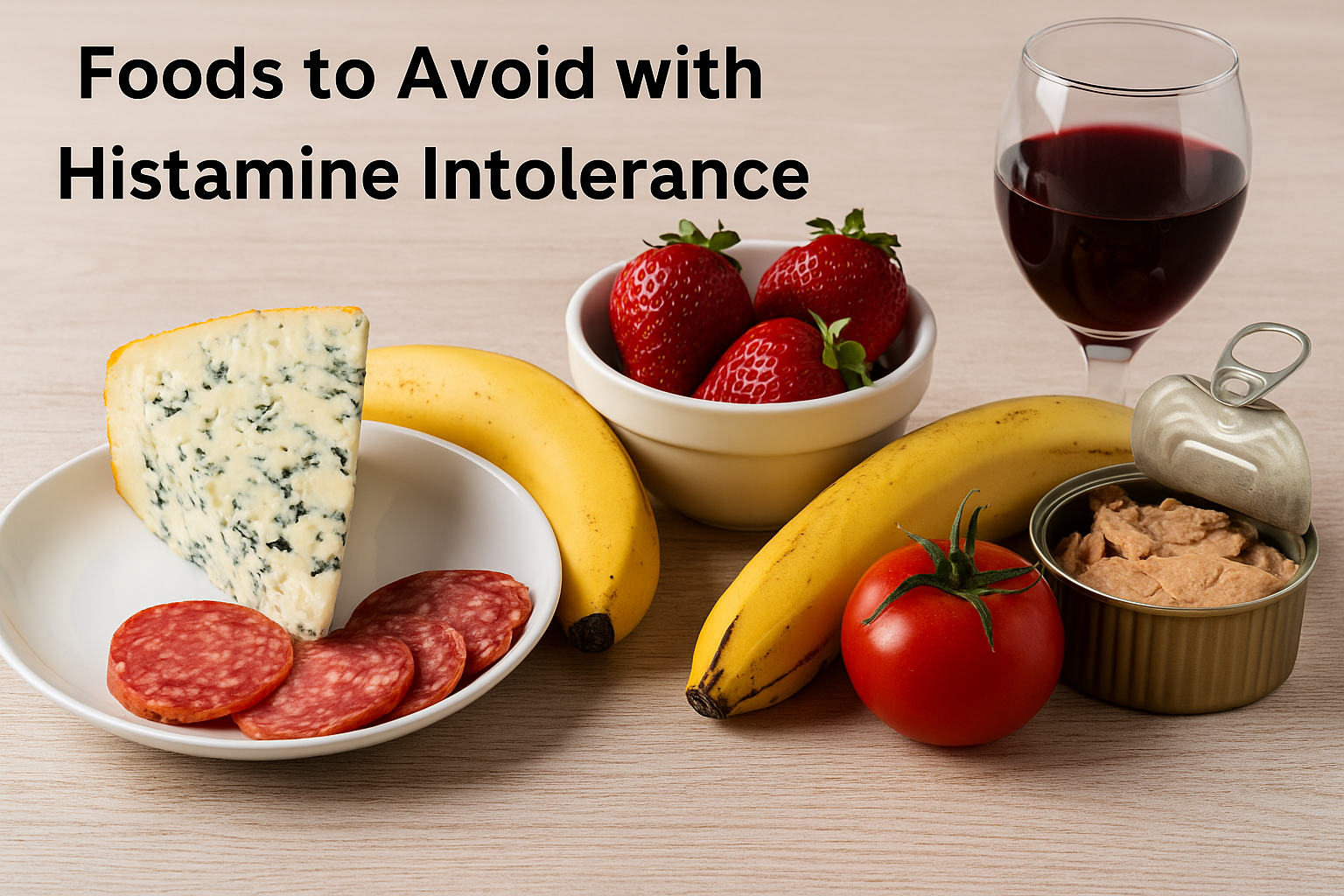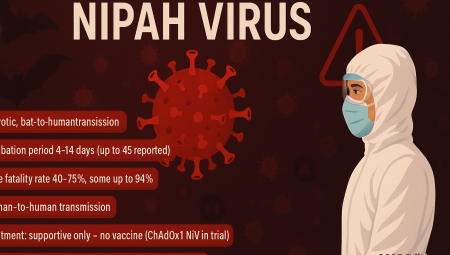Histamine intolerance is a misunderstood and often misdiagnosed condition that affects thousands of people worldwide—many of whom suffer silently. It occurs when the body is unable to effectively break down histamine, a compound involved in immune responses and digestion. The symptoms often mimic allergies, digestive issues, or anxiety disorders, making diagnosis tricky.
But here’s the good news: one of the most effective ways to manage histamine intolerance is diet modification. In this guide, we explore the top foods to avoid and provide expert insight into how to minimize your histamine load.
Who Is This Guide For?
This article is ideal for:
-
Adults aged 25–55 with unexplained allergy-like or gut-related symptoms
-
Health-conscious individuals exploring root causes of chronic inflammation
-
Functional medicine followers and wellness enthusiasts
-
People following low-histamine or elimination diets
-
Readers from the US, UK, Canada, and Europe seeking dietary answers to histamine overload
💡 What Are the Worst Foods for Histamine Intolerance?
People with histamine intolerance should avoid aged cheeses, processed meats, fermented foods, alcohol, canned fish, and overripe fruits. These foods contain high histamine levels or trigger histamine release, worsening symptoms like headaches, hives, and digestive discomfort.
What Is Histamine Intolerance?
Histamine is a naturally occurring chemical in the body that regulates:
-
Digestion
-
Immune response
-
Blood pressure
-
Hormone signaling
When histamine isn’t broken down properly (due to low DAO enzyme activity or gut issues), it accumulates—leading to a variety of symptoms, such as:
-
Headaches or migraines
-
Itchy skin, hives, or flushing
-
Nasal congestion
-
Nausea or bloating
-
Palpitations
-
Anxiety or sleep issues
Why Diet Matters in Histamine Intolerance
Histamine builds up in foods over time—especially through aging, fermenting, and storing. This is why freshness and food handling are as important as food type. Certain foods also act as histamine liberators, releasing more histamine into your system even if they don’t contain it directly.
15 High-Histamine or Trigger Foods to Strictly Avoid
1. Aged Cheeses
Parmesan, gouda, Swiss, blue cheese
– Aged dairy products are histamine-rich due to fermentation and protein breakdown.
2. Cured Meats
Salami, pepperoni, prosciutto
– Preserved meats are a double threat: high in histamine and nitrates.
3. Fermented Vegetables
Sauerkraut, kimchi, pickles
– Despite probiotic benefits, fermented foods are high in histamine.
4. Alcohol (Especially Wine and Beer)
– Alcohol inhibits the DAO enzyme and can directly trigger histamine release.
5. Vinegar and Balsamic-Based Dressings
– All vinegars are fermented and typically histamine-loaded.
6. Canned or Smoked Fish
Tuna, mackerel, sardines, anchovies
– High protein + long storage time = histamine factory.
7. Leftovers (Especially Meat-Based)
– Histamine increases the longer food sits, even in the fridge.
8. Eggplant, Spinach, and Tomatoes
– These are histamine liberators and can worsen symptoms in sensitive individuals.
9. Overripe Fruits
Bananas, avocados, papayas, strawberries
– As fruit ripens, histamine content rises significantly.
10. Soy Sauce, Miso, and Tempeh
– Fermented soy products are among the worst triggers.
11. Chocolate
– Contains phenylethylamine and other compounds that release histamine.
12. Nuts (Especially Walnuts, Cashews, Peanuts)
– Often mold-prone or poorly stored, contributing to histamine load.
13. Shellfish
Shrimp, crab, lobster
– Rapidly spoil and are naturally high in histamine.
14. Processed or Ready-Made Meals
– Full of preservatives, aged components, and questionable freshness.
15. Energy Drinks and Colas
– Contain additives, caffeine, and artificial colorants that can trigger symptoms.
Hidden Sources of Histamine
Don’t forget:
-
Probiotic capsules (many are histamine-producing strains)
-
Bone broth left simmering for hours
-
Deli counters with aged or cross-contaminated items
-
Supplements with citrus bioflavonoids
Safe Food Alternatives for Low-Histamine Diets
-
Fresh-cooked chicken, turkey, or lamb
-
Fresh apples, pears, blueberries
-
White rice, sweet potatoes
-
Zucchini, carrots, cauliflower
-
Olive oil and coconut oil
-
Herbal teas (except black or green tea)
How to Reduce Histamine Load in Your Body
-
Eat fresh, cook small portions, and avoid storing leftovers
-
Freeze meat immediately after buying
-
Use DAO enzyme supplements before meals (under medical supervision)
-
Track symptoms with a food diary
-
Work with a functional nutritionist for personalized guidance
Pro Tips: Managing Histamine Intolerance Like a Pro
-
Never eat from salad bars or buffets—foods sit out and build histamine.
-
Use glass containers instead of plastic to avoid chemical exposure.
-
Drink plenty of filtered water—dehydration worsens symptoms.
-
Don’t reheat animal protein more than once.
-
Prioritize gut health—take glutamine or probiotics (non-histamine producing strains).
-
Avoid food prep stress—high cortisol can worsen histamine reactions.
Frequently Asked Questions (FAQ)
Can histamine intolerance go away?
In some cases, yes—especially if caused by gut damage or temporary inflammation. Long-term resolution requires gut healing and dietary discipline.
Is yogurt bad for histamine intolerance?
Yes. Most yogurts are fermented and contain histamine. Even “low histamine” varieties can be problematic for sensitive individuals.
How quickly do symptoms appear after eating?
Reactions can occur within minutes or hours—typically peaking 2–4 hours after consuming high-histamine foods.
Are antihistamines a permanent solution?
They may help short-term, but overuse can deplete DAO activity. A food-based approach is more sustainable and holistic.
Is coffee allowed?
Coffee itself is not high in histamine but is a known histamine liberator, especially when consumed with sugar or cream.
Have You Experienced These Triggers?
Have any of these foods caused strange reactions for you?
👇 Leave a comment below to share your story or ask a question—your insight might help someone else!



